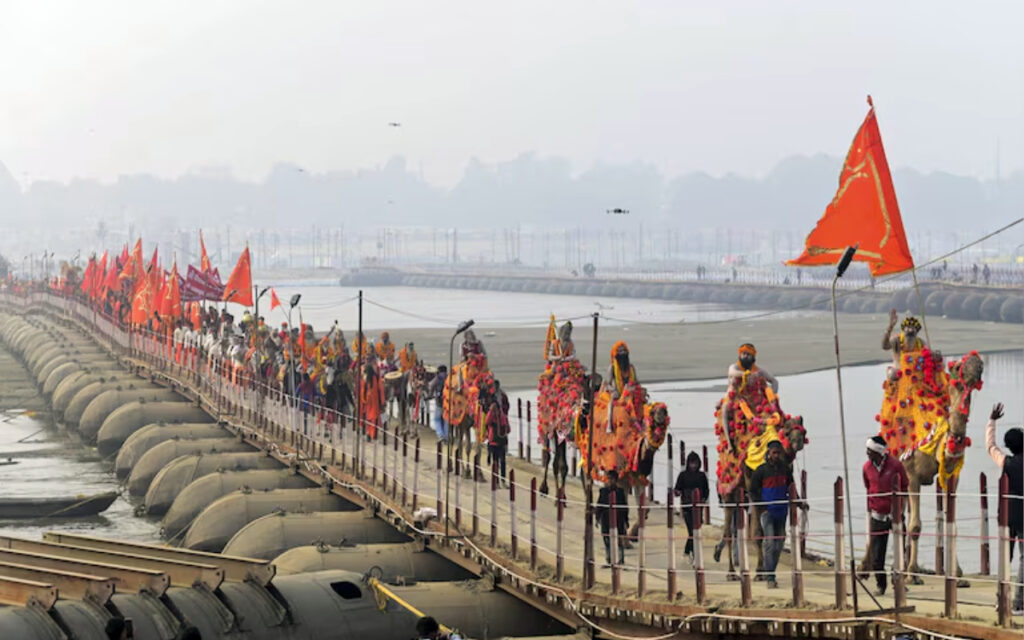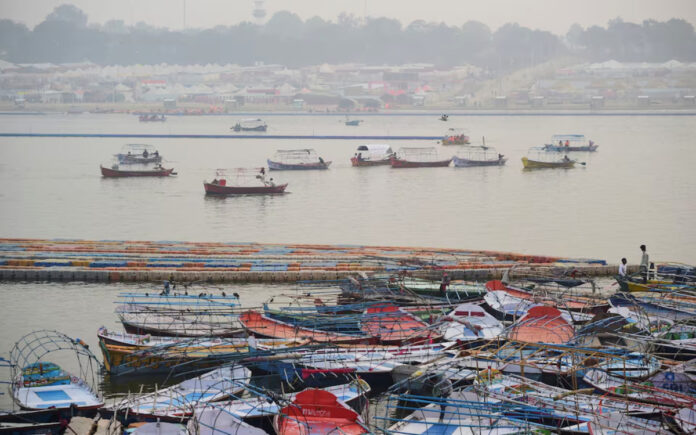Prayagraj, UP: The Maha Kumbh Mela, or Great Pitcher Festival, begins on January 13 and will continue for six weeks, drawing more than 400 million people to Prayagraj, northern India. This massive gathering will be the largest of its kind globally, surpassing any other event in terms of sheer human numbers.
What Is the Kumbh Mela?
Held every three years in four cities along India’s sacred rivers, the Kumbh Mela is one of the most significant religious events for Hindus. The festival that occurs once every 12 years, known as the Maha Kumbh, is considered even more auspicious due to its timing, drawing the largest crowds.
Devotees believe that bathing in the holy rivers during the Kumbh Mela cleanses them of sins and provides liberation from the cycle of life and death.

Origins of the Kumbh Mela
The roots of the Kumbh Mela trace back to the Rigveda, an ancient Hindu text. The word kumbh translates to a pitcher, which, according to Hindu mythology, contained the elixir of immortality that emerged during a cosmic event called the Sagar Manthan or churning of the ocean. This divine battle lasted for 12 days, which is equated to 12 human years. As a result, drops of the elixir fell at four locations—Prayagraj, Haridwar, Nashik, and Ujjain—the four cities that now host the Kumbh Mela.
During the Kumbh Mela, devotees from various Hindu sects, or Akharas, participate in grand processions, culminating in the Shahi Snaan (royal bath), where they take a dip in the sacred rivers. The event is not just a spiritual occasion but also a visual spectacle, with thousands of saints and hermits, often wearing saffron robes, braving freezing temperatures to bathe in the holy waters.

Who Will Attend?
The Maha Kumbh Mela in Prayagraj is expected to welcome over 400 million people—an unprecedented number. This vast gathering will take place at the confluence of the Ganga, Yamuna, and the mythical Saraswati River.
The attendees include sadhus (spiritual saints) and hermits who follow rigorous spiritual practices and visit the Kumbh only during this sacred event. Over the years, the Kumbh has attracted global attention, with notable personalities like actor Richard Gere, director David Lynch, and Tibetan Buddhist leader Dalai Lama attending.
In 2017, the Kumbh Mela was officially added to UNESCO’s Intangible Cultural Heritage of Humanity list, further cementing its cultural and spiritual significance.
Also Read | Maha Kumbh Mela 2025: Faith Unites Millions in the World’s Largest Gathering
Organizing the Maha Kumbh Mela
With over 400 million people expected, organizing the Maha Kumbh Mela is a monumental task. In comparison, the Haj pilgrimage in Saudi Arabia saw around 1.8 million attendees last year.
To accommodate the vast crowds, authorities have set up 150,000 tents, with facilities to host pilgrims three times the size of Russia’s population. The event requires 450,000 new electricity connections, with more than half already installed. The Kumbh is anticipated to consume power worth nearly 300 million rupees ($3.5 million), more than the energy consumption of 100,000 urban apartments in a month.
Also Read | Najib Razak’s Home Detention Dispute: PM Anwar Says No Cover-Up
To enhance the experience for pilgrims, additional toilets and sanitation services have been added, ensuring a more comfortable environment. Drones and surveillance cameras are deployed to maintain security and prevent accidents, especially in light of previous tragedies. For instance, in 2013, a stampede claimed the lives of 36 pilgrims.



